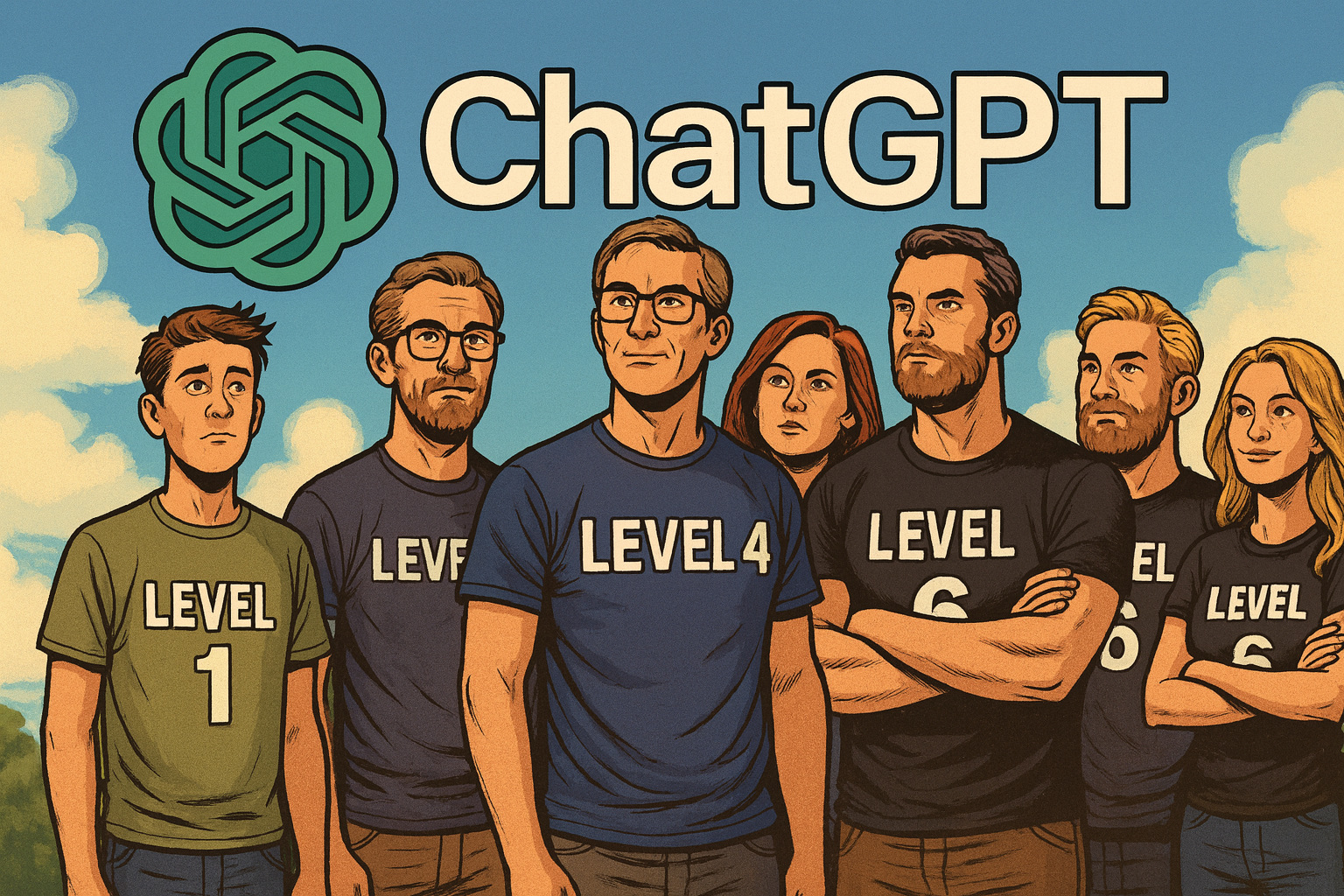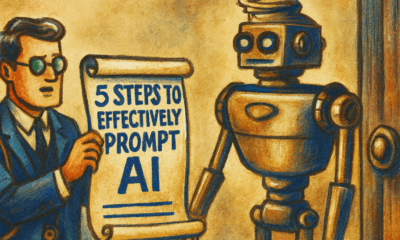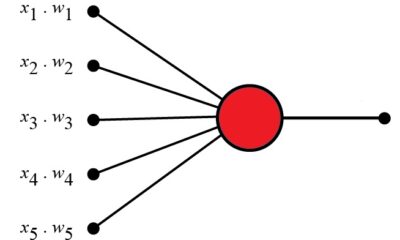Education
How to Start with AI: A Practical Guide for Everyone

- Share
- Tweet /data/web/virtuals/375883/virtual/www/domains/spaisee.com/wp-content/plugins/mvp-social-buttons/mvp-social-buttons.php on line 63
https://spaisee.com/wp-content/uploads/2025/06/image-1-1-1000x600.png&description=How to Start with AI: A Practical Guide for Everyone', 'pinterestShare', 'width=750,height=350'); return false;" title="Pin This Post">
Introduction
Artificial Intelligence (AI) has become a buzzword in recent years—but for many, it’s still mysterious, intimidating, or just plain confusing. You may have heard about AI creating images, writing emails, composing music, or helping with schoolwork or business strategies. But how do you start using AI, especially if you’re not a tech expert?
This guide is for beginners and everyday people who want to use AI—not build it. Whether you’re a teacher, small business owner, student, parent, retiree, or simply curious, this tutorial will walk you through what AI is, why it matters, and—most importantly—how you can start using it today.
What is AI, Really?
Artificial Intelligence refers to computer systems that can perform tasks that usually require human intelligence. This includes things like understanding language, recognizing patterns, learning from data, and even making decisions.
The most popular kind of AI today is Generative AI, such as ChatGPT, DALL·E, or Google Gemini. These AIs can generate text, images, audio, or even video from simple instructions called prompts.
Why Should You Care?
AI can help you:
- Save time (writing emails, creating content, summarizing documents)
- Get ideas (brainstorming, writing stories, planning trips)
- Learn new skills (language learning, coding, explaining complex topics)
- Increase productivity (automate routine tasks, generate reports)
- Be more creative (design, writing, music, invention)
AI is not about replacing you. It’s about amplifying what you can do.
Step 1: Understanding What AI Can Do
Before diving in, it’s important to know the types of tasks AI is good at:
| AI Can Do | AI Can’t Do |
|---|---|
| Write texts, letters, reports | Feel emotions or understand you like a human |
| Answer questions based on data | Always be accurate (it can “hallucinate”) |
| Translate languages | Know everything (it only knows what it was trained on) |
| Create images from text | Think ethically or legally like a human |
| Help code | Replace real-world experience or wisdom |
Common Use Cases for Beginners
- Personal use: meal planning, writing resumes, journaling
- Education: homework help, concept explanation
- Business: social media content, marketing ideas, customer service drafts
- Creative projects: poems, short stories, art generation
Step 2: Choosing a Tool
There are many AI platforms available. Here are a few popular ones for beginners:
- ChatGPT (OpenAI): Text-based assistant for writing, planning, learning.
- DALL·E (OpenAI): Create images from descriptions.
- Google Gemini: Similar to ChatGPT, from Google.
- Microsoft Copilot: AI integrated into Word, Excel, etc.
- Canva AI tools: Design with text instructions.
Most of these tools are free (with paid upgrades), available in browsers, and user-friendly.
👉 TIP: Start with ChatGPT at https://chat.openai.com for general help.
Step 3: Writing Your First Prompt
What is a Prompt?
A prompt is the instruction or question you give to the AI. It’s like giving a task to a helpful assistant. The more clearly you describe what you want, the better the result.
How to Write a Good Prompt
Think of a good prompt like giving directions to someone who wants to help but doesn’t know you. Be:
- Clear
- Specific
- Contextual
Basic Formula:
“Do [something] about [topic], for [audience], in [style or tone].”
Examples:
- ❌ “Write something about Paris.”
- ✅ “Write a 200-word travel blog post about the best things to do in Paris for a first-time visitor, in a friendly tone.”
Practice Prompt:
Try typing this into ChatGPT:
“I’m a beginner learning about AI. Can you explain what AI is in simple terms, like you’re talking to a 10-year-old?”
You’ll be surprised how helpful and friendly the response is.
Step 4: Iterating to Get What You Want
AI is a Conversation
AI isn’t magic—it’s a back-and-forth. If you don’t get the answer you want the first time, tweak your prompt or ask a follow-up. This is called prompt iteration.
Example:
You: Write a poem about summer.
AI: (Gives a generic poem)
You: Make it funny and include ice cream.
AI: (Updates with a new version)
You: Now make it a haiku.
AI: (Gives a short, humorous haiku)
You are guiding the AI, like a creative partner.
Use These Techniques:
- Be specific: Length, tone, style, format.
- Give examples: “Make it like this: [example].”
- Use roles: “Act as a chef and explain how to cook pasta.”
- Ask for improvement: “Make this more professional.”
Step 5: Saving and Using the Results
Once you have the result you want, you can:
- Copy it into an email, document, or social media post.
- Download images (if using image generation tools).
- Combine with your own content.
- Ask the AI to format it for a specific platform (e.g., “Make this a tweet” or “Turn this into a YouTube script”).
Legal Note
- Most platforms let you use AI-generated content freely, but always double-check facts.
- Don’t use AI to plagiarize or create harmful or misleading content.
- AI is a tool—not an authority.
Step 6: Learning by Doing
Start with Small Projects:
- Ask the AI to summarize your emails.
- Create a to-do list with AI.
- Write a story for your child or grandchild.
- Design a weekly meal plan.
- Draft a business idea.
Build Your Confidence
As you use AI more, you’ll get better at prompting. You’ll learn how to ask the right questions and how to refine the answers.
Final Tips
| Do | Don’t |
|---|---|
| Treat AI as a helpful assistant | Expect perfection on the first try |
| Give detailed, clear prompts | Use vague commands |
| Experiment and iterate | Get discouraged by bad answers |
| Use it ethically | Use it to cheat or spread misinformation |
Conclusion: Why You Should Start Today
AI is no longer science fiction—it’s a practical tool available to everyone. You don’t need to be a programmer or tech-savvy to benefit. Starting now gives you a huge advantage, whether it’s saving time, getting creative, or learning faster.
AI is like learning to use a new language. The more you practice, the more fluent you become.
So don’t wait. Open an AI tool, type your first prompt, and begin your journey. The future isn’t coming—it’s already here. And it’s waiting for you to take the first step.
Education
A Turning Point in AI: OpenAI’s “AI Progress and Recommendations”

Capabilities Advancing, but the World Stays the Same
In a post shared recently by Sam Altman, OpenAI laid out a new framework reflecting just how far artificial intelligence has come — and how far the company believes we have yet to go. The essay begins with the recognition that AI systems today are performing at levels unimaginable only a few years ago: they’re solving problems humans once thought required deep expertise, and doing so at dramatically falling cost. At the same time, OpenAI warns that the gap between what AI is capable of and what society is actually experiencing remains vast.
OpenAI describes recent AI progress as more than incremental. Tasks that once required hours of human effort can now be done by machines in minutes. Costs of achieving a given level of “intelligence” from AI models are plummeting — OpenAI estimates a roughly forty-fold annual decline in cost for equivalent capability. Yet while the technology has advanced rapidly, everyday life for most people remains largely unchanged. The company argues that this reflects both the inertia of existing systems and the challenge of weaving advanced tools into the fabric of society.
Looking Ahead: What’s Next and What to Expect
OpenAI forecasts that by 2026 AI systems will be capable of “very small discoveries” — innovations that push beyond merely making human work more efficient. By 2028 and beyond, the company believes we are likely to see systems that can make even more significant discoveries — though it acknowledges the uncertainties inherent in such predictions. The post also underscores that the future of AI is not just about smarter algorithms, but about shaped social, economic and institutional responses.
A Framework for Responsible Progress
The document outlines three major pillars that OpenAI deems essential for navigating the AI transition responsibly. First, labs working at the frontier must establish shared standards, disclose safety research, and coordinate to avoid destructive “arms-race” dynamics. In OpenAI’s view, this is akin to how building codes and fire standards emerged in prior eras.
Second, there must be public oversight and accountability aligned with the capabilities of the technology — meaning that regulations and institutional frameworks must evolve in concert with rising AI power. OpenAI presents two scenarios: one in which AI evolves in a “normal” mode and traditional regulatory tools suffice, the other in which self-improving or super-intelligent systems behave in novel ways and demand new approaches.
Third, the concept of an “AI resilience ecosystem” is introduced — a system of infrastructure, monitoring, response teams and tools, analogous to the cybersecurity ecosystem developed around the internet. OpenAI believes such resilience will be crucial regardless of how fast or slow AI evolves.
Societal Impact and Individual Empowerment
Underlying the vision is the belief that AI should not merely make things cheaper or faster, but broaden access and improve lives. OpenAI expects AI to play major roles in fields like healthcare diagnostics, materials science, climate modeling and personalized education — and aims for advanced AI tools to become as ubiquitous as electricity, clean water or connectivity. However, the transition will be uneven and may strain the socioeconomic contract: jobs will change, institutions may be tested, and we may face hard trade-offs in distribution of benefit.
Why It Matters
This statement represents a turning point — not just for OpenAI, but for the AI ecosystem broadly. It signals that leading voices are shifting from what can AI do to how should AI be governed, deployed and embedded in society. For investors, policy-makers and technologists alike, the message is clear: the existence of powerful tools is no longer the question. The real question is how to capture their upside while preventing cascading risk.
In short, OpenAI is saying: yes, AI is now extremely capable and moving fast. But the institutions, policies and social frameworks around it are still catching up. The coming years are not just about brighter tools — they’re about smarter integration. And for anyone watching the next phase of generative AI, this document offers a foundational lens.
AI Model
How to Get Factual Accuracy from AI — And Stop It from “Hallucinating”

Everyone wants an AI that tells the truth. But the reality is — not all AI outputs are created equal. Whether you’re using ChatGPT, Claude, or Gemini, the precision of your answers depends far more on how you ask than what you ask. After months of testing, here’s a simple “six-level scale” that shows what separates a mediocre chatbot from a research-grade reasoning engine.
Level 1 — The Basic Chat
The weakest results come from doing the simplest thing: just asking.
By default, ChatGPT uses its Instant or fast-response mode — quick, but not very precise. It generates plausible text rather than verified facts. Great for brainstorming, terrible for truth.
Level 2 — The Role-Play Upgrade
Results improve dramatically if you use the “role play” trick. Start your prompt with something like:
“You are an expert in… and a Harvard professor…”
Studies confirm this framing effect boosts factual recall and reasoning accuracy. You’re not changing the model’s knowledge — just focusing its reasoning style and tone.
Level 3 — Connect to the Internet
Want better accuracy? Turn on web access.
Without it, AI relies on training data that might be months (or years) old.
With browsing enabled, it can pull current information and cross-check claims. This simple switch often cuts hallucination rates in half.
Level 4 — Use a Reasoning Model
This is where things get serious.
ChatGPT’s Thinking or Reasoning mode takes longer to respond, but its answers rival graduate-level logic. These models don’t just autocomplete text — they reason step by step before producing a response. Expect slower replies but vastly better reliability.
Level 5 — The Power Combo
For most advanced users, this is the sweet spot:
combine role play (2) + web access (3) + reasoning mode (4).
This stack produces nuanced, sourced, and deeply logical answers — what most people call “AI that finally makes sense.”
Level 6 — Deep Research Mode
This is the top tier.
Activate agent-based deep research, and the AI doesn’t just answer — it works. For 20–30 minutes, it collects, verifies, and synthesizes information into a report that can run 10–15 pages, complete with citations.
It’s the closest thing to a true digital researcher available today.
Is It Perfect?
Still no — and maybe never will be.
If Level 1 feels like getting an answer from a student doing their best guess, then Level 4 behaves like a well-trained expert, and Level 6 performs like a full research team verifying every claim. Each step adds rigor, depth, and fewer mistakes — at the cost of more time.
The Real Takeaway
When people say “AI is dumb,” they’re usually stuck at Level 1.
Use the higher-order modes — especially Levels 5 and 6 — and you’ll see something different: an AI that reasons, cites, and argues with near-academic depth.
If truth matters, don’t just ask AI — teach it how to think.
AI Model
81% Wrong: How AI Chatbots Are Rewriting the News With Confident Lies

In 2025, millions rely on AI chatbots for breaking news and current affairs. Yet new independent research shows these tools frequently distort the facts. A European Broadcasting Union (EBU) and BBC–supported study found that 45% of AI-generated news answers contained significant errors, and 81% had at least one factual or contextual mistake. Google’s Gemini performed the worst, with sourcing errors in roughly 72% of its responses. The finding underscores a growing concern: the more fluent these systems become, the harder it is to spot when they’re wrong.
Hallucination by Design
The errors aren’t random; they stem from how language models are built. Chatbots don’t “know” facts—they generate text statistically consistent with their training data. When data is missing or ambiguous, they hallucinate—creating confident but unverified information.
Researchers from Reuters, the Guardian, and academic labs note that models optimized for plausibility will always risk misleading users when asked about evolving or factual topics.
This pattern isn’t new. In healthcare tests, large models fabricated medical citations from real journals, while political misinformation studies show chatbots can repeat seeded propaganda from online data.
Why Chatbots “Lie”
AI systems don’t lie intentionally. They lack intent. But their architecture guarantees output that looks right even when it isn’t. Major causes include:
- Ungrounded generation: Most models generate text from patterns rather than verified data.
- Outdated or biased training sets: Many systems draw from pre-2024 web archives.
- Optimization for fluency over accuracy: Smooth answers rank higher than hesitant ones.
- Data poisoning: Malicious actors can seed misleading information into web sources used for training.
As one AI researcher summarized: “They don’t lie like people do—they just don’t know when they’re wrong.”
Real-World Consequences
- Public trust erosion: Users exposed to polished but false summaries begin doubting all media, not just the AI.
- Amplified misinformation: Wrong answers are often screenshot, shared, and repeated without correction.
- Sector-specific risks: In medicine, law, or finance, fabricated details can cause real-world damage. Legal cases have already cited AI-invented precedents.
- Manipulation threat: Adversarial groups can fine-tune open models to deliver targeted disinformation at scale.
How Big Is the Problem?
While accuracy metrics are worrying, impact on audiences remains under study. Some researchers argue the fears are overstated—many users still cross-check facts. Yet the speed and confidence of AI answers make misinformation harder to detect. In social feeds, the distinction between AI-generated summaries and verified reporting often vanishes within minutes.
What Should Change
- Transparency: Developers should disclose when responses draw from AI rather than direct source retrieval.
- Grounding & citations: Chatbots need verified databases and timestamped links, not “estimated” facts.
- User literacy: Treat AI summaries like unverified tips—always confirm with original outlets.
- Regulation: Oversight may be necessary to prevent automated systems from impersonating legitimate news.
The Bottom Line
The 81% error rate is not an isolated glitch—it’s a structural outcome of how generative AI works today. Chatbots are optimized for fluency, not truth. Until grounding and retrieval improve, AI remains a capable assistant but an unreliable journalist.
For now, think of your chatbot as a junior reporter with infinite confidence and no editor.
-

 AI Model2 months ago
AI Model2 months agoHow to Use Sora 2: The Complete Guide to Text‑to‑Video Magic
-

 AI Model4 months ago
AI Model4 months agoTutorial: How to Enable and Use ChatGPT’s New Agent Functionality and Create Reusable Prompts
-

 AI Model5 months ago
AI Model5 months agoComplete Guide to AI Image Generation Using DALL·E 3
-

 AI Model5 months ago
AI Model5 months agoMastering Visual Storytelling with DALL·E 3: A Professional Guide to Advanced Image Generation
-

 AI Model3 months ago
AI Model3 months agoTutorial: Mastering Painting Images with Grok Imagine
-

 News2 months ago
News2 months agoOpenAI’s Bold Bet: A TikTok‑Style App with Sora 2 at Its Core
-

 AI Model7 months ago
AI Model7 months agoGrok: DeepSearch vs. Think Mode – When to Use Each
-

 Tutorial2 months ago
Tutorial2 months agoFrom Assistant to Agent: How to Use ChatGPT Agent Mode, Step by Step











